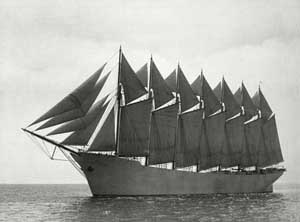
A group of shipwreck hunters laid claim to the vessel in 2004, hoping to raise it and preserve it in a giant display tank on Buffalo’s waterfront. The vessel was found about 20 miles off Dunkirk, west of Buffalo, resting in 170 feet of cold freshwater.
But the state soon claimed ownership under federal and state law and accused the group, Northeast Research, LLC, of mishandling the wreck and human remains found on board.
A magistrate judge’s recommendation late last month agreed with the state.
Northeast’s “actions at the site amounted to little more than plundering and despoiling the vessel,” Magistrate Judge Leslie Foschio wrote in a May 27 report.
Northeast has until June 25 to object to the magistrate’s findings. An overseeing judge will conduct a hearing before issuing a final ruling.
“It would be absolutely ridiculous to destroy the very thing we’re trying to salvage and preserve,” said Pat Clyne, part owner of Northeast, on Wednesday. Northeast will file objections and continue to pursue its plans, he said.
The group envisions raising the vessel and displaying it in a museum setting, in a coldwater tank replicating the natural conditions on the bottom of Lake Erie. Tourists would be able to watch as divers inside the tank worked to preserve and study the historic ship, he said.
“This is going to be as big as the Liberty Bell, the Alamo … those pieces of Americana that people like to visit,” Clyne said.
Northeast and its experts believe the well-preserved schooner had a role in the War of 1812 and the underground railroad, though the state’s experts think it was newer and more likely sank hauling grain and hickory nuts.
In court filings, Northeast argues the schooner was probably the Caledonia, used in the fur trade in the early 1800s before being commandeered by the British military at the outbreak of the War of 1812 and then captured by the Americans a year later.
After the war, the Caledonia was sold to Pennsylvania merchants who renamed it the General Wayne and used it to ferry runaway slaves to Canada, according to Northeast’s filings.
The state argued that without evidence the unmarked ship is the Caldonia/General Wayne, it should be classified as abandoned and fall under the control of the state where it was found.
New York favors leaving wrecks as is, an opinion shared by some experts.
“The presumption should be, unless there’s a compelling reason to move it, we leave it in place,” Art Cohn, executive director of the Lake Champlain Maritime Museum, said Wednesday.
“They should be studied and written about and filmed and shared with the public in as many ways as possible, but there has to be a thoughtful approach to all of that,” said Cohn, whom the state hired as an expert in the case.
In siding with the state, the magistrate said divers had not used proper archaeological excavation techniques to preserve the site. He noted that planks had been removed from the cabin roof and bones were gathered up without required notice to state officials.
Clyne said Wednesday the damage to the ship had been caused by vandals, and he denied that human remains had been mishandled.
A permit Northeast obtained from the state prevented divers from removing human remains, he said, so any found in the cabin were put in a canvas bag and left there so they would not be dispersed. Other very small bone fragments were unknowingly sifted out and brought to the surface, he said, and sent to a Department of Defense lab for DNA analysis.
Copyright 2010 Associated Press. All rights reserved. This material may not be published, broadcast, rewritten, or redistributed.
AP-ES-06-16-10 1919EDT


